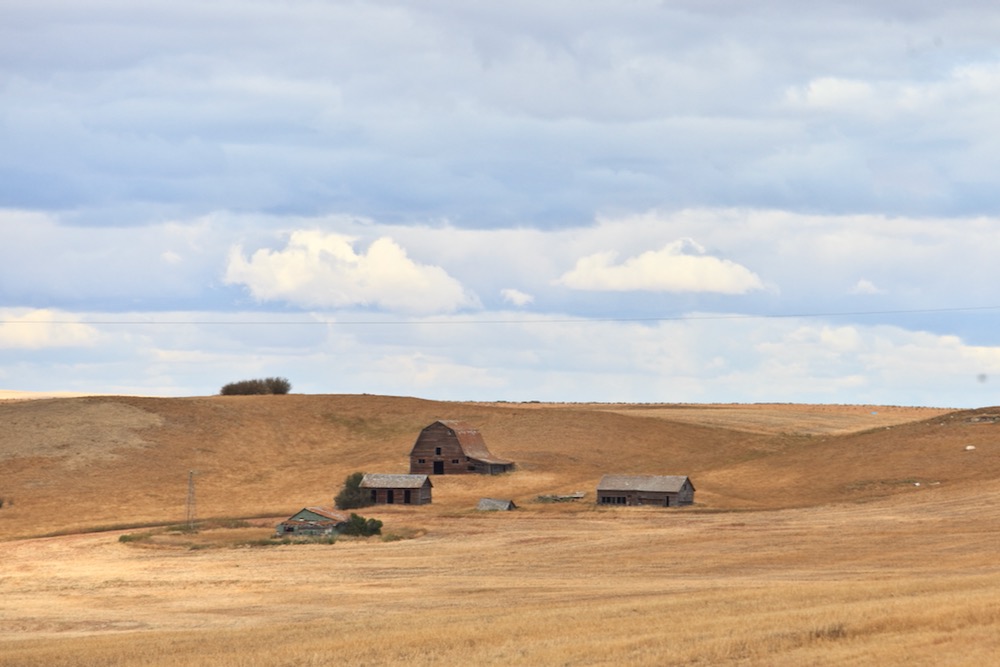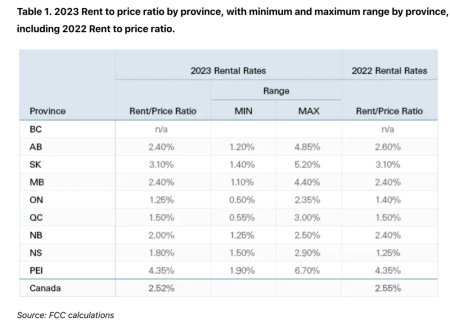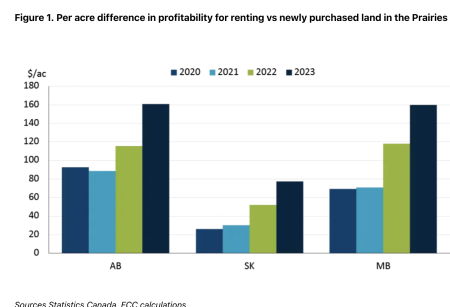Renting land better than buying for cash flow: FCC

Rising farmland values and higher interest rates have swung the affordability pendulum in favour of renting, not buying, farmland.
That’s according to a recent online article by Farm Credit Canada (FCC) that delved into the dollars and cents of the renting-or-buying decision.
Generally, the cost to rent farmland is lower than financing a purchase, making renting a worthwhile option to explore, FCC said. It can support cash flow and minimize financial risk to the overall farm operation.
The best way to analyze this decision is what’s known as the rent-to-price ratio, which is the cash rental rate per acre divided by the value of that acre of land. The result is a ratio that is measured as a percentage.
For example, land worth $5,000 an acre, with a rental rate of $100 an acre, would have a rent-to-price ration of 2.0 per cent.

The largest increase in farmland values in 2023 were in Saskatchewan, Manitoba, and Quebec. With rental rates rising at a similar pace overall in those provinces the ratio remained stable. Alberta had a rent-to-price ratio of 2.4 per cent in 2023, down from 2.6 per cent in 2023. Saskatchewan was at 3.1 per cent both years. Manitoba was at 2.4 per cent both years.
The national rent-to-price ratio in 2023 was 2.52 per cent, a slight decrease from 2022. The lowest rent-to-price ratio provincially was Ontario, at 1.25 per cent in 2023, compared to 1.4 per cent in 2022. The highest was Prince Edward Island at 4.35 per cent in 2023, unchanged from 2022.
In 2022, Ontario saw the highest increase in farmland values with an average 19.4 per cent increase, with a more modest increase of 10.7 per cent in 2023. With the RP ratio decreasing this year, this indicates that cash rental rates agreements have not evolved at the same pace as farmland values.
Read Also


AAFC makes a few tweaks in Apr S&D report
Agriculture and Agri-Food Canada made a small amount of changes in its April supply and disposition report released on Apr. 19. Of the changes made, nearly all were slight adjustments to its pulse and special crop numbers.
Similar results were observed in Atlantic provinces with the rate of increase in rental agreements being lower than the rate of farmland value appreciation in both New Brunswick and Prince Edward Island. These provinces experienced higher than average increases in farmland values in 2022.
Cash rental agreements are often negotiated for longer periods, which encourages better land stewardship and more predictability for both parties. There is also considerable fluctuation in each province’s cash rental rates and farmland values. The high-end RP ratio is usually seen on farmland with the lowest value per acre in the province.
Specialty crops, like potatoes, are generally negotiated at higher prices than other crops.
Renting farmland can complement land purchases and is often part of long-term strategic growth plans, FCC says, but a lot goes into that decision.


Rent or buy?
Renting may be part of the business strategic plan when an operation is looking to expand their land base and grow their operation. Buying land can tie up available capital and reduce cash flow, leaving fewer financing options for machinery, input needs or future expansion opportunities.
While there are obvious advantages of land ownership, cash flow remains a key consideration for producers, as this is tied to the ability to service debt and maintaining agility for capitalizing on opportunities, FCC says. The difference in per acre profitability is generated by subtracting the cost of renting land from a newly purchased land cost, assuming a 25 per cent down payment and 25-year amortization length.
Since 2021, the three Prairie provinces have seen an increased cash flow benefit from renting land compared to purchasing. In 2023 in Alberta, rented ground returned $160 per acre more than newly-purchased land. The same story holds true for Manitoba as the per acre difference in profitability due to renting has doubled since 2020.
Saskatchewan has also seen the advantage grow for renting over owned land as well, but with smaller results.
Ontario and Quebec producers have also seen higher cash flow advantages when moving to rental agreements compared to newly purchased land. Ontario’s rent advantage was 2.5 times higher in 2023 compared to 2020, while Quebec is 2.1 times higher.
While the cash flow advantage of renting over financing is significant, producers need to understand their cost of production before entering into a new land rental agreement to ensure it meets the needs of their operation.
Source: Farmtario.com

